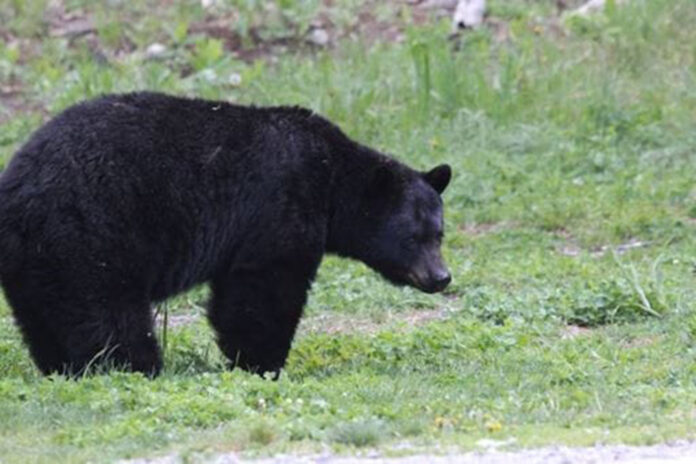Pet food, bird seed, and compost bins are just a few of the items that attract bears to an area, and the Ministry of Environment is asking residents to keep that in mind as the animals emerge from hibernation.
Matthew Tokaruk, Saskatchewan’s black bear population manager, said it’s difficult to track how often bears search human habitats for food, but conservation officers did receive an unusually high number of calls about the problem in 2020.
On Monday, Tokaruk asked residents to be more careful about what they leave outside rural homes and cabins to help cut down on those interactions.
“The number of (nuisance bears) and the calls vary over time, but there’s a strong relation with how humans are behaving in those encounters or situations, and natural food availability,” he explained. “There’s not a hard and fast number on how often these issues occur, but we do certainly know that people’s practices around attractants can really reduce the number of bear issues we have year to year.”
Tokaruk said 2020 was a unique year, so ministry officials aren’t drawing sweeping conclusions from the increase in calls. He said residents spent more time at their homes and cabins than normal last summer, which may explain why they noticed more bears scrounging around for food. However, there are a few other causes for concern.
Several parts of the province experienced very poor berry crops in 2020, something bears rely on for a quick, easy snack when coming out of hibernation. Tokaruk said that may have pushed bears to search for food near human residences.
“These are highly intelligent animals, so it doesn’t take terribly long for a bear to become habituated,” he explained. “That’s why we really do stress people keeping their barbeques clean and their pet food inside and not leaving garbage around and not adding fish, meat or eggs to compost bins, things like that.”
The Ministry of Environment announced a list of actions Saskatchewan residents can take to minimize the chance a bear will make a habit of visiting their property. Aside from advice on compost and barbeques, ministry officials recommend regularly rinsing garbage and recycling bins, and taking down bird feeders during the summer.
Garbage containers are a common concern in the Prince Albert and Lakeland areas, Tokaruk explained, and he urged residents to be careful about what they leave out overnight.
Regardless of what actions are taken, Tokaruk said everyone needs to remember that Saskatchewan is bear country, so seeing the animals wander through a property isn’t a problem. The goal is to make sure they don’t come to rely on the area for food.
“We do hope that people can keep … yards and cottage areas free of those attractants, and then the bears really have no reason to be there,” he added. “They’ll just wander through, as it is bear habitat in much of Saskatchewan, but have no desire to stay.”
Bears typically range across all Northern Saskatchewan forests, and southward into the aspen parkland. They can also be found in isolated ranges such as the Torchwood Hills, the Qu’Appelle Valley, and the South Saskatchewan River Valley.
A nuisance bear is described as a bear that begins to associate food with human environments. The Ministry says these bears can become public safety concerns.
Residents can report nuisance bears to the Ministry of Environment by calling 1-800-567-4224, or by emailing centre.inquiry@gov.sk.ca. If residents encounter an aggressive bear that is a public safety concern, they can call the Turn in Poachers and Polluters (TIPP) hotline at 1-800-667-7561.
For more information on bear safety in Saskatchewan, visit www.saskatchewan.ca/wildlife-issues.


